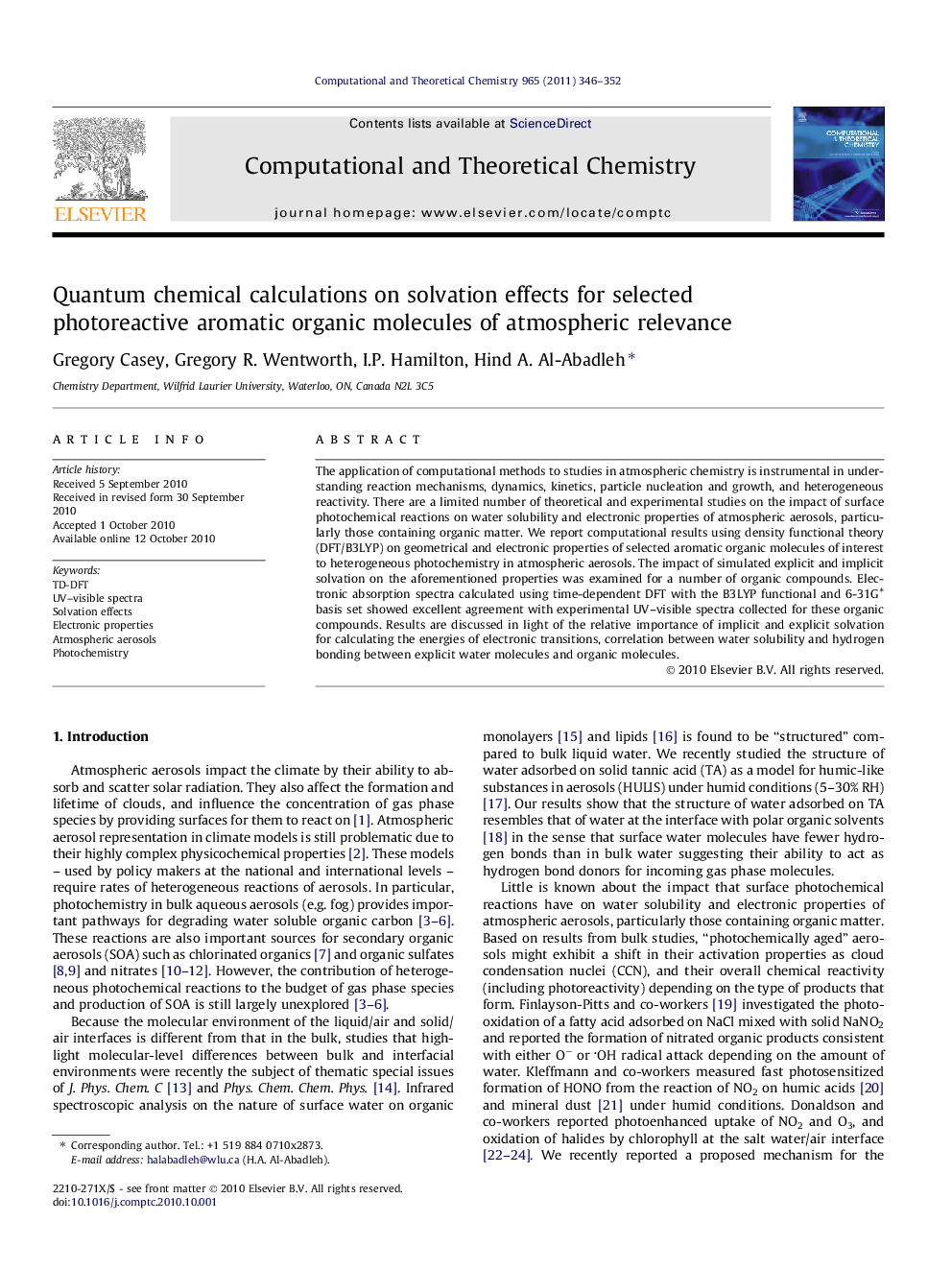| Article ID | Journal | Published Year | Pages | File Type |
|---|---|---|---|---|
| 5395363 | Computational and Theoretical Chemistry | 2011 | 7 Pages |
Abstract
The application of computational methods to studies in atmospheric chemistry is instrumental in understanding reaction mechanisms, dynamics, kinetics, particle nucleation and growth, and heterogeneous reactivity. There are a limited number of theoretical and experimental studies on the impact of surface photochemical reactions on water solubility and electronic properties of atmospheric aerosols, particularly those containing organic matter. We report computational results using density functional theory (DFT/B3LYP) on geometrical and electronic properties of selected aromatic organic molecules of interest to heterogeneous photochemistry in atmospheric aerosols. The impact of simulated explicit and implicit solvation on the aforementioned properties was examined for a number of organic compounds. Electronic absorption spectra calculated using time-dependent DFT with the B3LYP functional and 6-31Gâ basis set showed excellent agreement with experimental UV-visible spectra collected for these organic compounds. Results are discussed in light of the relative importance of implicit and explicit solvation for calculating the energies of electronic transitions, correlation between water solubility and hydrogen bonding between explicit water molecules and organic molecules.
Keywords
Related Topics
Physical Sciences and Engineering
Chemistry
Physical and Theoretical Chemistry
Authors
Gregory Casey, Gregory R. Wentworth, I.P. Hamilton, Hind A. Al-Abadleh,
